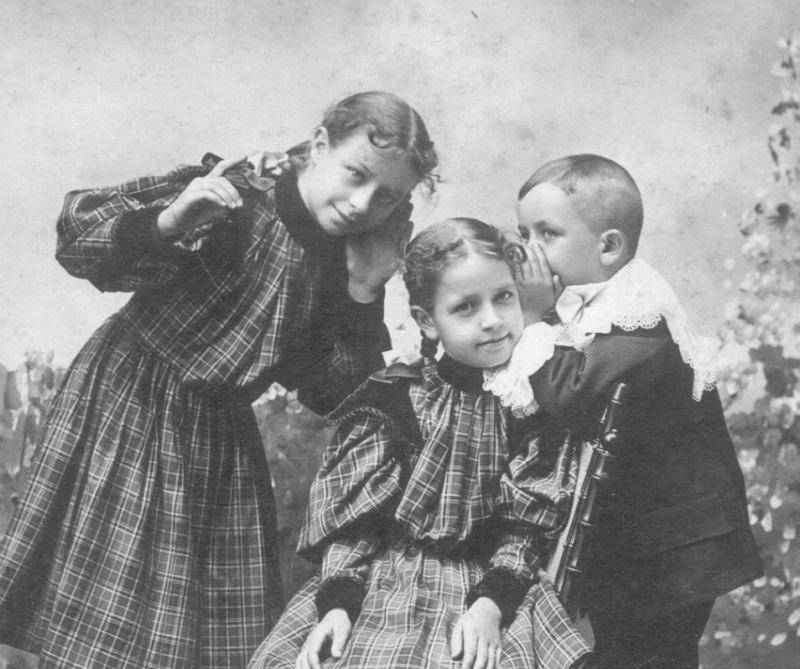***
boys' dresses United States of America specific patterns plaid gender

American Plaid Dresses: Gender

Figure 1.--This Chicago cabinet portrait is undated, but the mount and clothes lool like the 1890s. The children were presumably siblings who the photographer has creatively posed--unusual at the time.
The girls are wearing matching plaid dresses with velvet trim while their little brother wears a knee pants suit with Fauntleroy trim. Notice the girls have velvet trim at the collar and cuffs whilr the boy has the Fauntleroy lace and ruffled trim.
|
|
As a result of the association with kilts, plaid material became a popular pattern for boys wear. We see many children wearing plaid dresses in the second half of the 19th century. We can often, but not always identify the gender of the children. While only boys for the most part wore kilts, it should not be assumed that plaid dresses were only for boys. We notice many girls also wearing plaid dressess. Plaid was, however, especially popular for boys' dresses. While girls also wore plaid, they had many more patterns that were popular. Plaid seems more common for boys than for girls, at least more prevalent in the photographic record. At least we have found many more images of boys wearing plaid dresses than girls. (Here we are assessing the dresses worn by younger children because there were far few older boys wearing dresses.)
Boys
While only boys for the most part wore kilts, it should not be assumed that plaid dresses were only for boys. While girls also wore plaid, they had many more patterns that were popular. Plaid seems more common for boys than for girls, at least more prevalent in the photographic record. At least we have found many more images of boys wearing plaid dresses than girls. (Here we are assessing the dresses worn by younger children because there were far few older boys wearing dresses.) We will eventually cross reference the plaid dresses archived on HBC here.
Girls
We notice many girls also wearing plaid dressess. Plaid was, however, especially popular for boys' dresses. This mnay, however, be an assessment that we have generally focused on images illustrating boys' fashions. Thus ourarchive of girls' clothing items is smaller than our boys' archives.
We have found severalimage that are not identified. Ofrwn there are often cluses which help us make reasonabke guesses about the gender if the chilkdren pictured. In other cases there are few clues or contradictory clues which makes it impossible to make an infomed assessment. We will archive the images we can not identify here. We incourage HBX readers to provide any insights they may have about these images.
HBC

Navigate the Historic Boys' Clothing Web dress pages:
[Return to the Main American plaid dress page]
[Return to the Main U.S. dress specific pattern page]
[Return to the Main U.S. national dress page]
[Pinafores]
[Ringlet curls]
[Smocks]
[Bodice kilts]
[Kilts]
[Fauntleroy dresses]
[Sailor dresses]
[Fancy dresses]
[Dresses: 16th-18th centuries]
[Dresses: Early-Mid-19th century]
[Dresses: Late-19th century]
[Dresses: Early 20th century]
[Difficult images]
[Movie dresses]
Navigate the Boys' Historical Clothing Web Site:
[Introduction]
[Activities]
[Biographies]
[Chronology]
[Clothing styles]
[Countries]
[Bibliographies]
[Contributions]
[FAQs]
[Glossaries]
[Images]
[Registration]
[Tools]
[Boys' Clothing Home]
Created: 6:27 AM 6/5/2010
Last updated: 6:44 AM 6/17/2012



